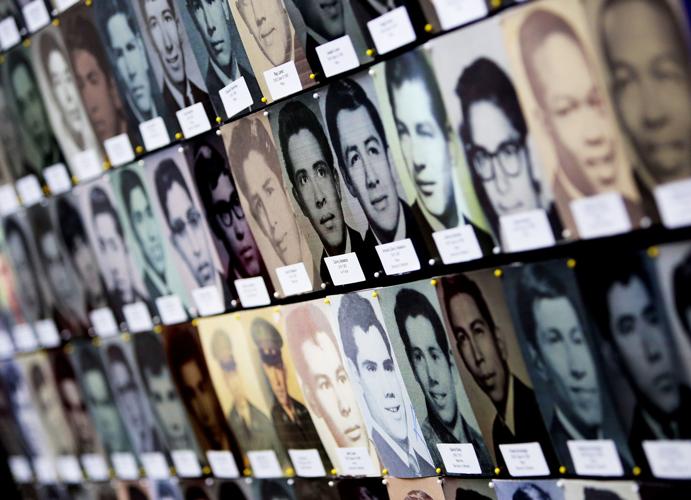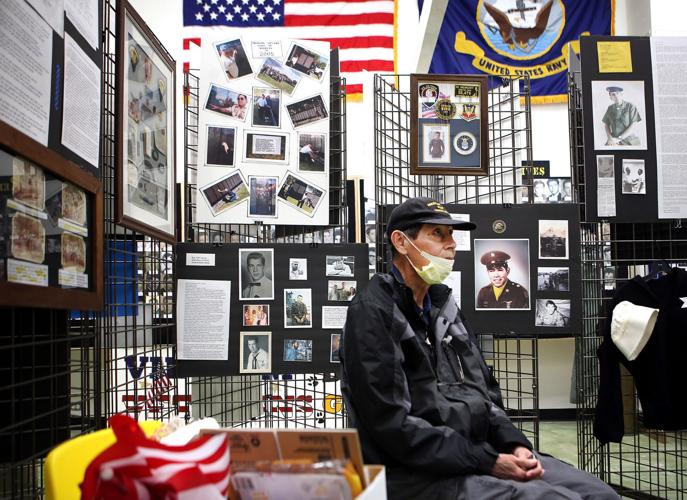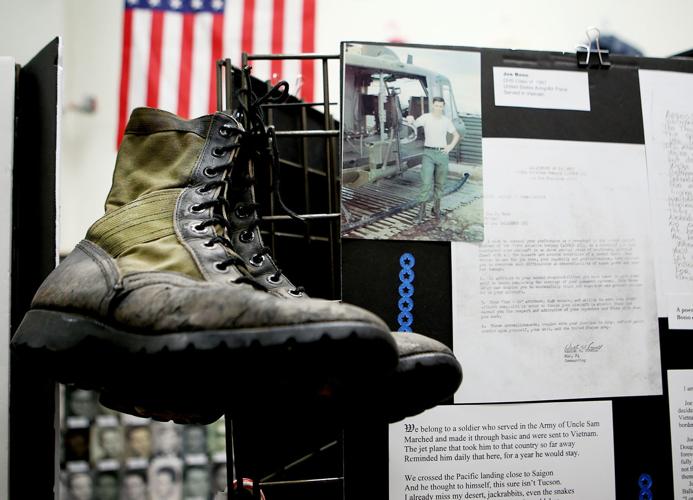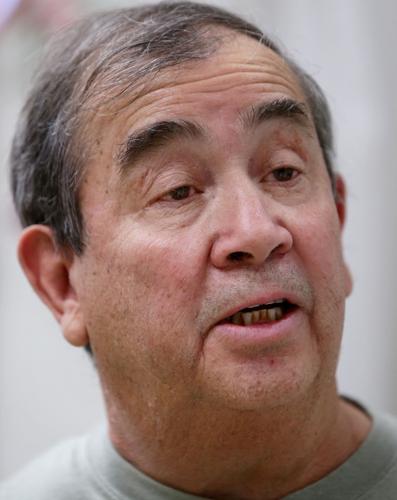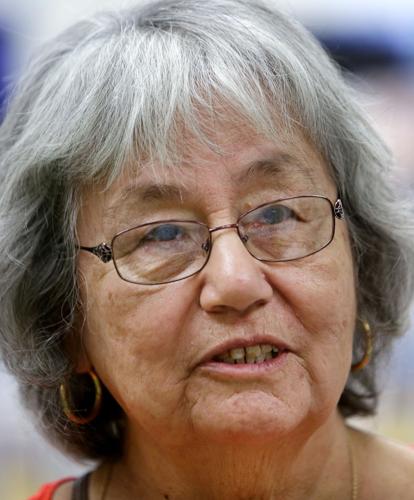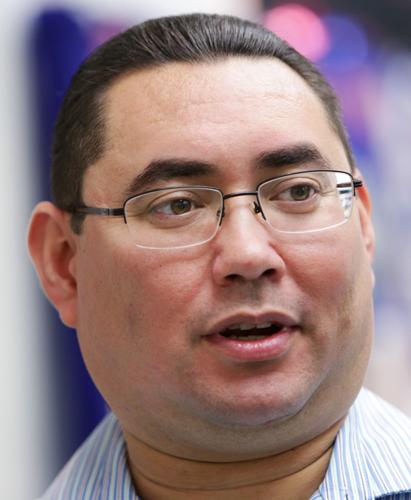Growing up in Douglas, the small border town about two hours southeast of Tucson, Ginny Jordan knew almost everyone. And if she didn’t know someone directly, surely someone in her extended family did.
The town, which sits across from Agua Prieta, Sonora, was known for its mining smelter. It’s also where the late Raul H. Castro, Arizona’s first and only Mexican-American governor, grew up. Douglas has always been a tight-knit community, bonded by multigenerational families from both sides of the international line.
So when the U.S. went to war in Vietnam, Jordan knew many of Douglas’ young men and women, some of whom were born in Mexico, who enlisted or were drafted. That included 11 members of Jordan’s family.
Douglas, not surprisingly, stepped up. It’s a patriotic town, Jordan said.
On Friday, Douglas residents displayed their pride with the unveiling of the “Wall of Faces,” the Douglas Vietnam War Veterans Commemorative Project, at the Arizona History Museum in Tucson. The museum is inside the Arizona Historical Society on East Second Avenue by the university Main Gate.
The exhibition, curated by Jordan and veteran Hector Leon, includes photographs, letters, stories and memorabilia collected from more than 500 Douglas men and women, most of whom attended Douglas High School and served in the military during the Vietnam War era. The exhibit, which will remain at the museum until July 4th, remembers and honors the commitment and sacrifice of the women and men who gave their time, and in some cases, their lives.
“It means so much to me,” said Leon, who served in the Army Reserve in the early 1970s. “To me it’s giving back a little bit to them for what they did.”
The exhibit’s genesis came in 2012 when then-President Obama asked communities across the country to honor Vietnam-era veterans and to reflect on the war itself. Cochise County joined the effort the following year, Jordan said. But not much came of it.
In Douglas, however, where there are a relatively large number of veterans, the response was different. Jordan and Leon knew of veterans who would gather in a town park to swap stories, something they did little of outside their circle. Their shared experiences forged in the tumult of Vietnam kept them together, in one way or another.
Wanting to tell their stories to the wider Douglas community, Jordan and Leon went to work. Through word of mouth and social media, they asked for veterans and their families to share photos and words. And they did. At first a few, then more, and eventually a steady stream of stories flowed.
There’s the story of George R. Ycoco, who served in Vietnam, and his father Raul V. Ycoco, who served in World War II. Both were killed in action. Both were 25 years old.
There’s the story of Jimmy Smith, a 1963 graduate of Douglas High School, who was on an Army patrol when it was attacked. When he scrambled for cover, he dove into a hole — occupied by Joe Medeguari from the class of ’66. Neither one knew that the other was on patrol at the same time.
Michael Arias’ story is that he and his platoon were ambushed on Oct. 17, 1967. “It was the most terrible two hours I have ever spent in my life,” he wrote. Using a compass, he led his platoon’s three survivors to safety. “I don’t know how I did it,” he later wrote to his mother, “but God was with me.”
And then there’s Alicia Dominguez, from the class of ’68, who, when asked why she enlisted, said, “I joined because I got kicked out of the convent ... revenge on the nuns.”
Jordan said that 13 Douglas residents were killed while serving in Vietnam. More than 600 Arizonans died in the war.
The exhibit is low-tech but high in personal connections, said Eric Gonzales, the museum’s operations manager. Gonzales saw the exhibit last year in Douglas at the old Phelps Dodge building, formally called the Cochise County Service Center. He felt the exhibit needed a larger audience in Tucson.
“It demonstrates a community coming together for a cause, a community coming together to tell its story,” Gonzales said.
But the stories and memorabilia are also personal for Gonzales, a Tucson native. His father Ramon and uncle Charley are represented in the exhibit. The Gonzales brothers served in the Navy during Vietnam.
When the exhibit closes this summer, it will return to Douglas, in its new home, at the old Gadsden Hotel. It likely will be larger as contributions are added, Jordan said.
“Every day we get a new one,” she said.
She called the Douglas community’s response to the exhibit “magical” as vets and their families responded enthusiastically. But she added that the exhibit is not about the Vietnam War. The exhibit goes beyond that.
It’s about people’s stories, ones that need to be told, recorded and remembered because, she said, “If the story isn’t told, it doesn’t exist.”


